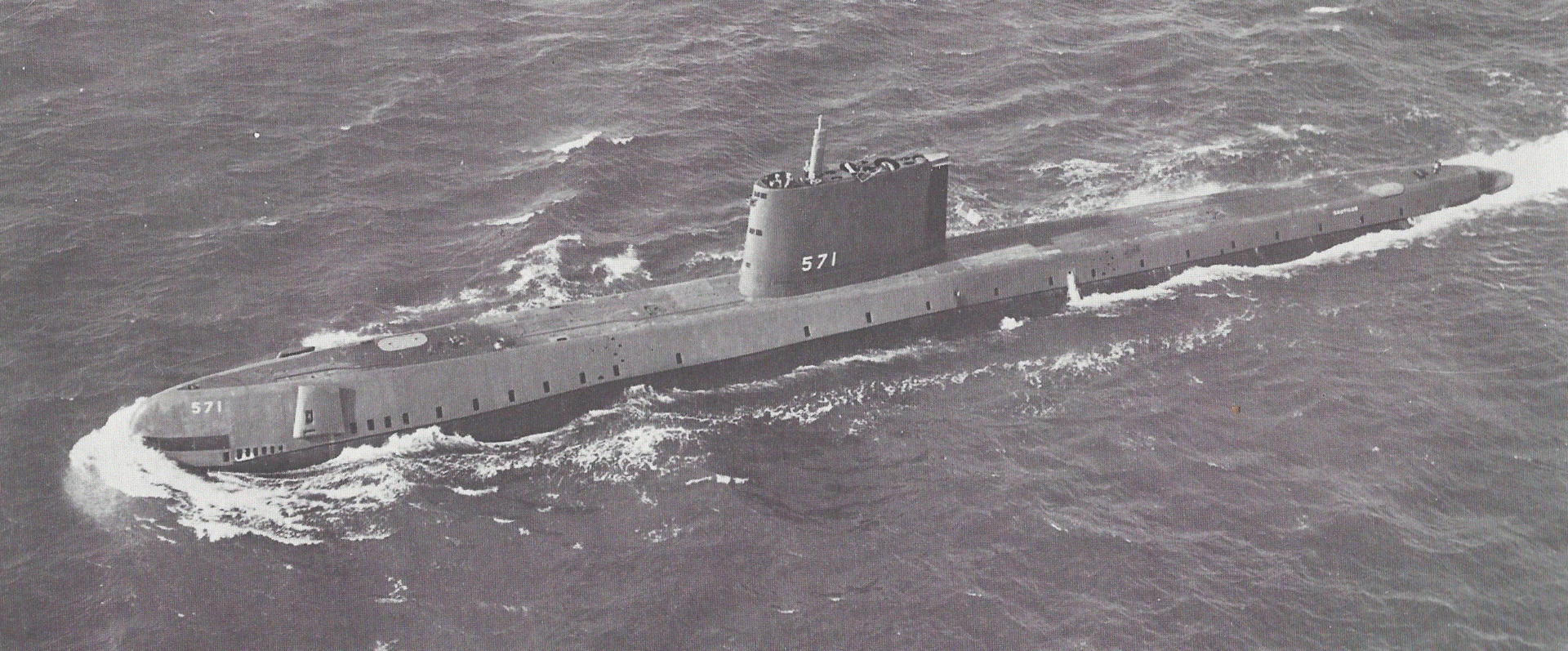_is_in_the_Thames_River_shor.jpg)
The Nautilus, 1954.
On August 3, 1958, the Nautilus—the world’s first nuclear submarine—completed its first undersea voyage to the North Pole, traveling 1,000 miles under the Arctic ice cap. After reaching its historic destination, it then made its way to Iceland, pioneering a new, shorter route from the Pacific to the Atlantic and Europe.

The Nautilus during her initial sea trials – 1955. (National Archives)
Because the Nautilus relied on nuclear propulsion (a zero-emissions process that consumed no air), it could remain submerged longer than its diesel-electric counterparts and thus broke several records in her first years of operation. Its uranium-powered nuclear reactor produced steam, which powered the sub’s propulsion turbines, enabling the Nautilus to travel underwater at speeds of over 20 knots.
Construction of the 319-foot, 3,180-ton submarine was supervised by U.S. Navy Captain Hyman G. Rickover, a Russian-born engineer and “Father of the Nuclear Navy,” who joined the U.S. atomic program in 1946. (Perhaps ironically, submarine transit of the North Pole was ordered by President Eisenhower in response to Sputnik’s nuclear ICBM (intercontinental ballistic missile) threat.)

(Credit: AP)
On July 23, 1958, Nautilus set a course northward from Pearl Harbor, Hawaii, carrying 111 officers and crew, four civilian scientists, and Commander William R. Anderson. Although ultimately successful, navigation beneath the arctic ice proved difficult: above 85°N, magnetic compasses and gyrocompasses are rendered inaccurate.
Nonetheless, the Nautilus raised its periscope only once before hitting the North Pole off the Diomedes Islands (between Alaska and Siberia) and surfaced only upon reaching Point Barrow, Alaska. From there, on August 1, the sub dove 500 feet beneath the Arctic ice cap, which varied in thickness from 10 to 50 feet.
On August 3, the sub passed under its destination, prompting Commander Anderson to announce to his crew: “For the world, our country, and the Navy—the North Pole.”
Two days later, the Nautilus finally surfaced in the Greenland Sea, and on August 7, it ended its historic journey at Iceland—serving as an important morale boost to America over the Soviets.
After a 25-year career and nearly 500,000 miles, the Nautilus was decommissioned on March 3, 1980. Designated a National Historic Landmark, it went on exhibit in 1986 at Connecticut’s Submarine Force Museum.

The Nautilus permanently docked at the Submarine Force Museum and Library, Groton, CT.




